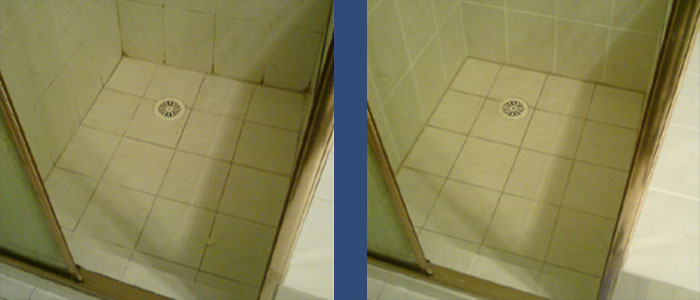How to Stop Bathroom Water Damage
How to Stop Bathroom Water Damage
Blog Article
In this article in the next paragraph you can discover additional reliable information and facts in regards to How to Repair and Prevent Bathroom Water Damage.

The bathroom is exceptionally at risk for wet buildup as well as prospective water damage because of the frequent use of water in it. This article offers straightforward examination strategies to aid finding water damages risks.
The frequent use of water in the bathroom makes it exceptionally at risk for damp build-up and potential water damages. By checking it on a regular basis, you can minimize water associated damages.
The adhering to collection of assessments is easy to perform and also must be done when in every three months in order to maintain your shower room in good shape and to stop prospective water damages caused by the bath tub, the shower, pipe joints and plumbing, sinks, closets, as well as the toilet
Do not forget doing these evaluations and be detailed while performing them. Keep in mind that these basic evaluations can conserve you a great deal of money by giving early signs for water damage
Sinks and Cabinets
Sinks and also cabinets are revealed to wetness and moisture daily and also are frequently forgotten. Examine regularly under the sink as well as on the countertop over it. Fix any drip in the catch as it may recommend drain troubles. Take a look around the sink, slow-moving draining pipes might suggest an obstructed drainpipe. Replace sink seals if they are fractured or loose.
Bath tub and Shower
The shower and also bathtub need unique attention as well as upkeep. Inspect the floor tiles and change if cracked. Make certain that there is no missing out on grout in between the tiles. Examine and also replace split caulking at joints where the wall surfaces satisfy the flooring or the bathtub. Blocked drains pipes and pipes troubles will stop the bath tub from drying as well as might indicate severe troubles below the tub. Seek advice from a professional right away to stop structural damage. Focus on stainings or soft areas around the tub wall surfaces as they might indicate an interior leakage.
Plumbing
Signs for water damages are hard to discover given that the majority of pipelines are installed inside the walls.
Pay special focus to floor covering and walls wetness as well as discolorations as they might indicate an unnoticeable plumbing issue. Inspect dampness degrees in adjacent rooms as well.
The Bathroom
The bathroom is an at risk water joint. Examine the water lines and also search for leaks around the toilet seat, in the hose pipe, as well as under the water storage tank. If you identify any kind of signs of moisture on the floor around the toilet, check for leaks in the toilet rim as well as storage tank seals.
Know that hanging bathroom dish antiperspirants raises the opportunities for obstructions.
TIPS TO PREVENT WATER DAMAGE IN THE BATHROOM
The average household uses approximately 80-100 gallons of water per person per day. For a family of 4, that's almost 2,500 gallons of water a week! The largest portion of this consumption comes from bathroom use. Flushing the toilet uses the most water, followed by taking a shower or bath. With that much water running through the home, water damage in the bathroom is bound to happen. Knowing how to spot signs of a water leak is essential to preventing long-term damage. This guide provides you with tips to reduce the impact of water damage on your bathroom.
CAUSES OF BATHROOM WATER DAMAGE
Pipe breaks are the most common cause of water damage we see in our daily jobs. The age of a pipe plays a large role in a pipe break as well as corrosion. Over time, the metal begins to break down, allowing water to escape. Frozen pipe breaks are also a concern in the winter months. Toilet overflows caused by paper products or children flushing inappropriate items. Degraded caulking around the toilet or bathtub can allow water seepage, sometimes behind the fixture, into the subfloor or walls. Condensation forms when the water in a pipe is cooler than the air temperature. Beads of water form on the exterior of the pipes, sometimes so much so that the water begins to drip and pool below. Sink or shower backups created by poor drainage. HOW TO PREVENT WATER DAMAGE IN YOUR BATHROOM
Inspect your toilet supply line for worn or frayed hoses and replace them as needed. Winterize your plumbing to prevent a frozen pipe break. Use vent fans to prevent condensation that can lead to mold growth. Routinely check and replace degraded caulking around your toilet or bathtub. Increase the temperature in your toilet tank and insulate your pipes during the warm summer months to keep condensation from forming. Use child safety locks on the toilets. Flush only toilet paper. "Flushable" wet wipes are actually not good for your plumbing system. Additionally, feminine hygiene products should not be flushed. Prevent water from escaping the tub or shower. Make sure shower curtains are in good condition. Inspect shower doors and replace the seal strip if necessary. Wipe up any water that accumulates on the floor and use bath mats. Water left to sit can cause damage to the tiles and flooring. Refrain from using bath products containing heavy oils to avoid a clogged drain.

As a reader about Common Causes of Water Damage in a Bathroom, I figured sharing that piece of content was really useful. Sharing is caring. You won't know, you could be doing someone a favor. Bless you for your time. Kindly stop by our website back soon.
Information Here Report this page